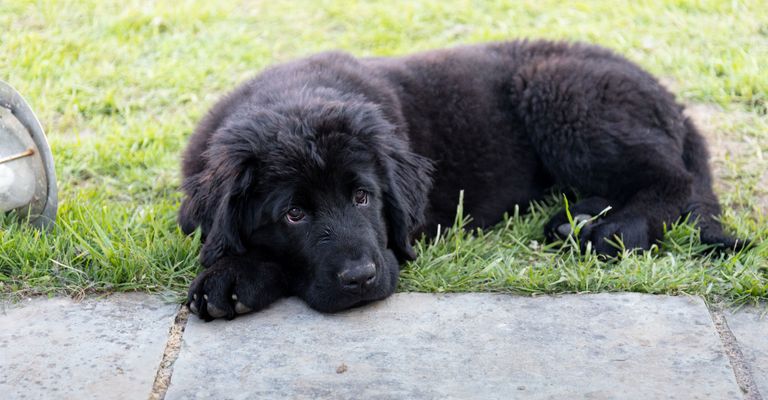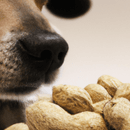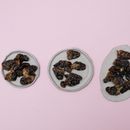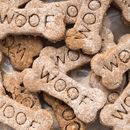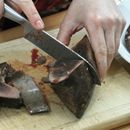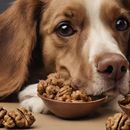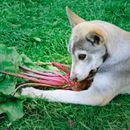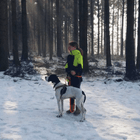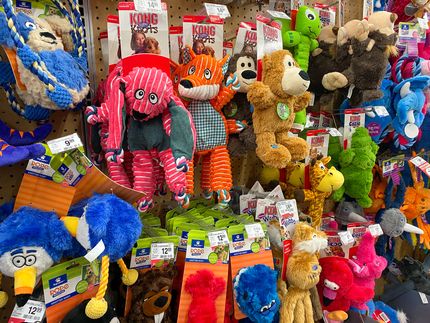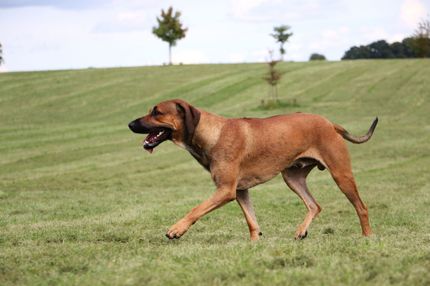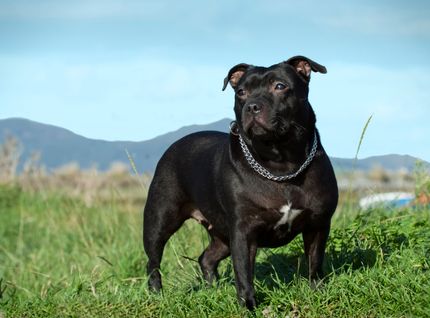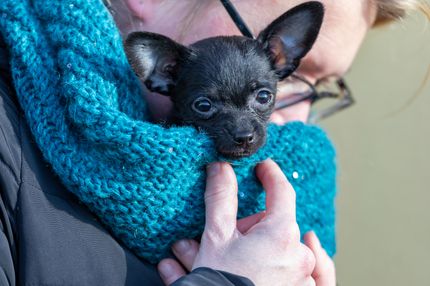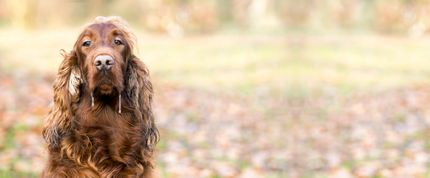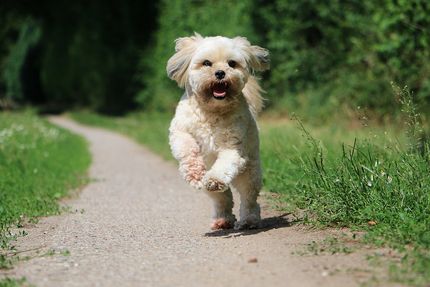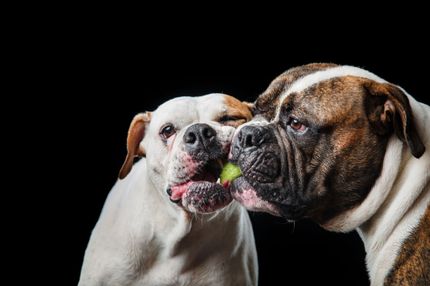When your dog eats grass, it can raise a lot of questions. In this article, we'll explore this common behavior and uncover what it means, why it happens, and how you should respond. Join us on this journey of discovery through dog eating grass to understand when it's normal and when it's cause for concern.
The mystery of grass eating: why do dogs do it?
The behavior of a dog eating grass is more than just a strange phenomenon. It is a natural behavior pattern that manifests itself for a variety of reasons. But why does your dog eat grass? Here are some of the most common explanations:
Digestive aid: grass contains a lot of fiber, which can stimulate digestion. So if your dog eats grass occasionally, it could be because he's trying to help his digestion.
Nutrient needs: some dogs might eat grass to make up for nutrient deficiencies. Grass is rich in some nutrients, so it can help provide nutrients, especially if the dog has an unbalanced diet.
Inducevomiting: Sometimes dogs eat grass to induce nausea. This can be a type of self-cleansing of the gastrointestinal tract, especially if the dog has swallowed hair or other indigestible items.
Stress relief or boredom: Just like humans, dogs can relieve stress or boredom by eating. Eating grass could be a way to keep your dog occupied or distracted.
Scent intake: some dogs might eat grass to pick up scents. This can be a way for them to mark their territory or gather information about their surroundings.
It is important to understand that occasional grass eating in dogs is usually not a cause for concern. However, a sudden increase in grass eating or eating accompanied by other symptoms may indicate an underlying health problem. In such cases, it is advisable to consult a veterinarian. In the following sections, we will look at these aspects in more detail.
Grass eating and vomiting: What's behind it?
If you notice that your dog eats grass and vomits afterwards, you might wonder what is behind it. This behavior can seem alarming at first, but it's important to understand that in many cases it's a natural mechanism.
Self-cleaning of the gastrointestinal tract: One of the common theories behind this behavior is that dogs eat grass to trigger an emetic response. This helps cleanse the gastrointestinal tract by expelling indigestible elements such as hair or bone fragments.
Indigestion: Sometimes eating grass and then vomiting can indicate digestive problems. If your dog is suffering from stomach pain, heartburn, or other digestive problems, he may try to relieve them by eating grass and then vomiting.
Regulate food intake: Dogs might eat grass and vomit to regulate their food intake. If your dog has eaten too much food or the wrong food, he might eat grass to get rid of the excess or incompatible food by vomiting.
Seekattention: In some cases, eating grass and vomiting could be a sign that your dog is seeking attention. This could be the case if your dog has noticed that he is getting more attention from you through this behavior.
However, it is important to note that repeated grass eating and vomiting can be a sign of serious health problems. If your dog is eating grass and vomiting regularly, or if the vomiting is accompanied by other symptoms such as lethargy, loss of appetite, or behavioral changes, you should see your veterinarian. It could be a sign of an underlying condition that requires treatment.
Dog eating grass: possible risks and when to worry
If you notice your dog eating grass regularly, it's usually nothing to worry about. It is a natural behavior exhibited by many dogs. However, there are some risks and situations where grass eating can become a problem.
Excessive grass eating can be a sign that your dog is suffering from health problems that require medical attention. For example, a dog that eats large amounts of grass and then vomits may be trying to clean out its stomach. This may indicate a gastrointestinal disorder that should be treated by a veterinarian. If your dog shows symptoms of diarrhea, vomiting or lethargy after eating grass, you should see a veterinarian immediately.
The risk of ingesting parasites or toxins is also an important aspect you should consider. Grass that has been treated with pesticides, fertilizers or other chemicals can harm your dog. In addition, parasites such as ticks or fleas may be lurking on the grass, or even more dangerous organisms such as lungworms.
It's also important to note that certain types of grass can be harmful. Some types of grasses can have sharp seed heads that can injure your dog's mouth, throat or intestines.
In summary, it is normal for your dog to eat grass occasionally. However, if the grass eating becomes too frequent, he vomits after eating grass, or the grass has been treated with chemicals, you should see a veterinarian. It's always better to be safe than sorry and minimize potential risks to ensure your four-legged friend's health.
Signs of excessive grass eating: When a visit to the vet is necessary
An occasional morsel of grass isn't a problem for your dog. However, if grass-eating suddenly becomes a habit, it should be seen as a warning sign. Here are some signs that could indicate excessive grass eating and require a vet visit:
Frequent vomiting after eating grass: It is normal for a dog to vomit occasionally after eating grass. However, if this occurs regularly, it may be a sign of an underlying health problem.
Changes in appetite or thirst: If your dog is eating more grass while showing less interest in his normal food or drinking more, this could be a sign of a medical condition.
Behavior changes: If your dog spends an unusual amount of time eating grass or seems uncomfortable after eating grass, this could also be a red flag.
Remember that as a dog owner, you know your four-legged friend best. If you notice a significant change in your dog's grass-eating behavior, don't hesitate to see a veterinarian. It's better to have one too many than one too few!
Safe grass sources for your dog: where can your dog eat grass?
It's not only important to know why your dog eats grass, but also where he can do it safely. Here are some tips to provide your dog with a safe grass source:
Untreated grass: Grass that has been treated with pesticides, fertilizers or other chemicals can be harmful to dogs. Make sure your dog only eats grass that is free of such substances.
Your own property: if you have a garden, this can be a safe source of grass for your dog, provided you don't use harmful substances to maintain the lawn.
Natural parks and reserves: these places often have natural grassy areas that are safe for your dog. However, make sure there are no special regulations for dogs and if there are any potentially toxic plants.
Dog parks: many dog parks offer safe grassy areas for dogs to play and eat.
Regardless of where your dog eats grass, it's important to monitor his activities and make sure the grass is not contaminated with hazardous substances. And a veterinarian should be consulted for any change in behavior.
